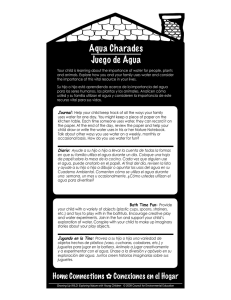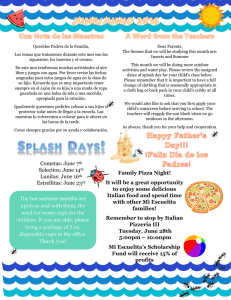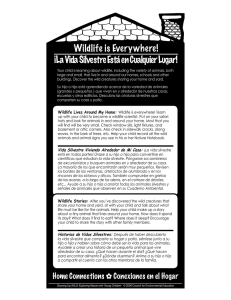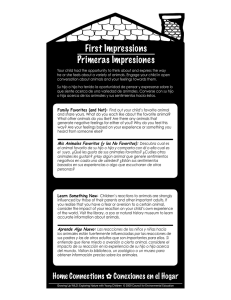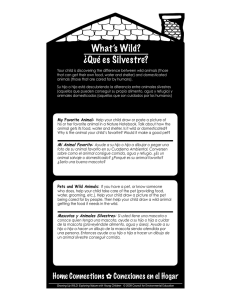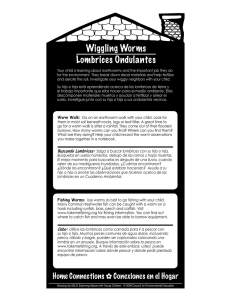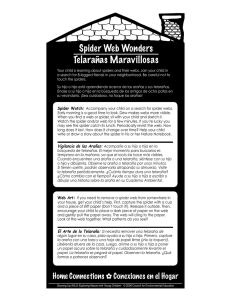Wildlife Water Safari El Agua en Vida Silvestre
Anuncio
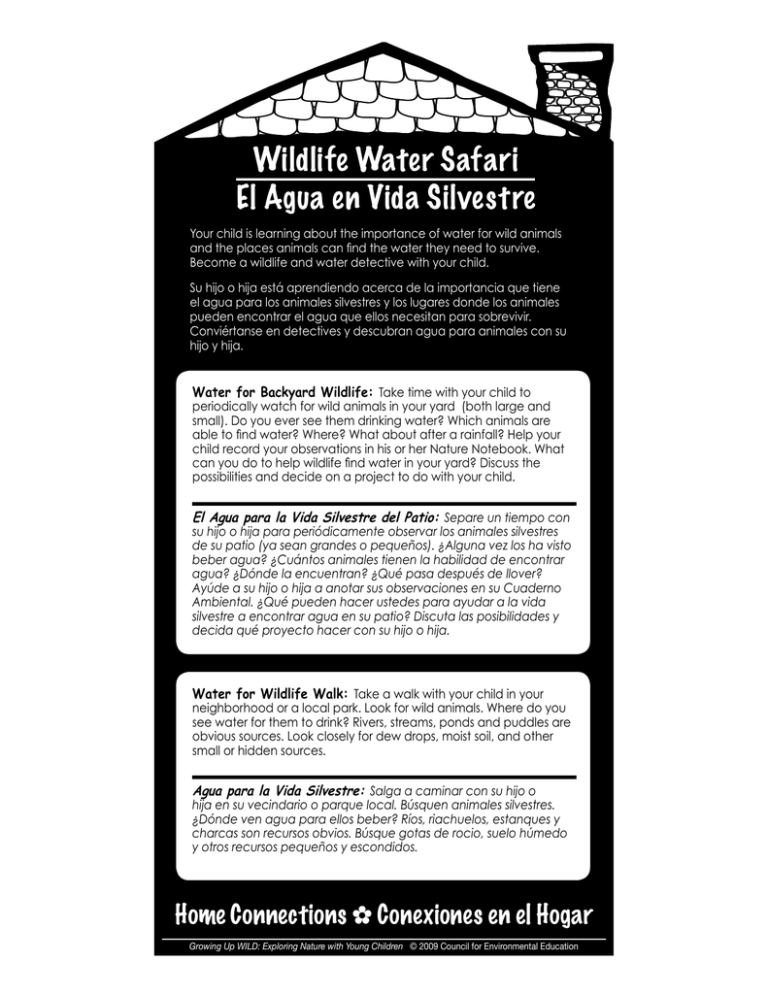
Wildlife Water Safari Journal: Help child find two leaves outside. Discuss the similarities El your Agua en Vida Silvestre and differences between them using the sense of sight, touch, smell and hearing (do not taste, unless you are positive the leaf is edible). Why do Your child is learning about the importance of water for wild animals the two leaves look different? Encourage your child to draw a picture the places can find Help the water they need to survive. ofand the leaves in hisanimals or her journal. your child write (or otherwise Become a wildlife and water detective with your child. indicate) special features of the leaves. Record where you found the leaves. Su hijo o hija está aprendiendo acerca de la importancia que tiene el agua para los animales silvestres y los lugares donde los animales Binocular Safari: Practice binoculars (real, homemade, pueden encontrar el aguausing que ellos necesitan para sobrevivir. or both, if possible) with en your child. Observe animalsagua at home in a local park. Conviértanse detectives y descubran paraor animales con su Discuss what they look like and what they are doing. hijo y hija. To use binoculars, first spot an animal or object with your eyes. Without taking your eyes off the object, lift the binoculars to your eyes to peer through. you able toWildlife: keep yourTake eyes on the WaterWere for Backyard time withobject? your child to periodically watch for wild animals in your yard (both large and small). Do you ever see them drinking water? Which animals are able to find water? Where? What about after a rainfall? Help your child record your observations in his or her Nature Notebook. What can you do to help wildlife find water in your yard? Discuss the possibilities and decide on a project to do with your child. El Agua para la Vida Silvestre del Patio: Separe un tiempo con su hijo o hija para periódicamente observar los animales silvestres de su patio (ya sean grandes o pequeños). ¿Alguna vez los ha visto beber agua? ¿Cuántos animales tienen la habilidad de encontrar agua? ¿Dónde la encuentran? ¿Qué pasa después de llover? Ayúde a su hijo o hija a anotar sus observaciones en su Cuaderno Ambiental. ¿Qué pueden hacer ustedes para ayudar a la vida silvestre a encontrar agua en su patio? Discuta las posibilidades y decida qué proyecto hacer con su hijo o hija. Water for Wildlife Walk: Take a walk with your child in your neighborhood or a local park. Look for wild animals. Where do you see water for them to drink? Rivers, streams, ponds and puddles are obvious sources. Look closely for dew drops, moist soil, and other small or hidden sources. Agua para la Vida Silvestre: Salga a caminar con su hijo o hija en su vecindario o parque local. Búsquen animales silvestres. ¿Dónde ven agua para ellos beber? Ríos, riachuelos, estanques y charcas son recursos obvios. Búsque gotas de rocio, suelo húmedo y otros recursos pequeños y escondidos. Home Connections _ Conexiones en el Hogar Growing Up WILD: Exploring Nature with Young Children © 2009 Council for Environmental Education
